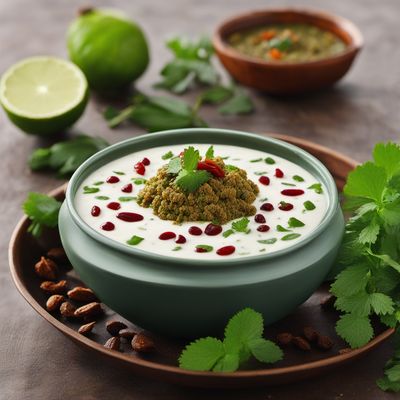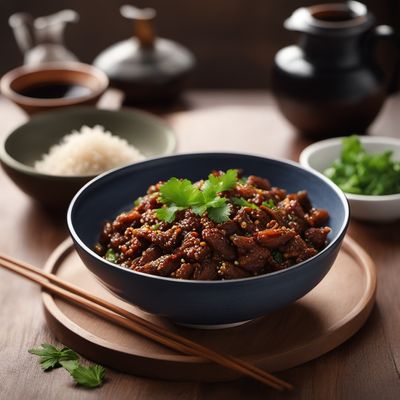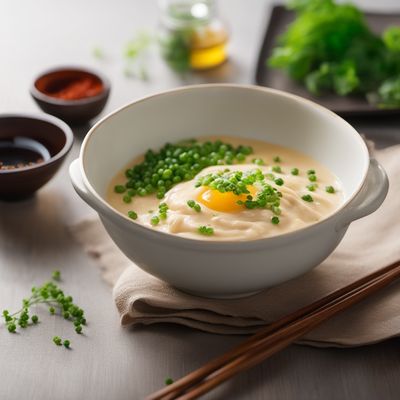
Recipe
Chinese Imperial Dahi Vada
Silken Dumplings in Imperial Sauce
4.8 out of 5
Indulge in the regal flavors of Chinese Imperial cuisine with this exquisite twist on the classic Indian dish, Dahi Vada. Delicate silken dumplings are bathed in a rich and aromatic imperial sauce, creating a harmonious fusion of flavors.
Metadata
Preparation time
30 minutes
Cooking time
20 minutes
Total time
50 minutes
Yields
4 servings
Preparation difficulty
Medium
Suitable for
Vegetarian, Vegan (if honey is substituted with a vegan sweetener), Gluten-free, Dairy-free, Nut-free
Allergens
N/A
Not suitable for
Paleo, Keto, Low-carb, High-protein, Meat-based diets
Ingredients
In this Chinese adaptation of Dahi Vada, we replace the traditional yogurt-based sauce with an imperial sauce that incorporates Chinese flavors and ingredients. The dumplings are also made using a combination of lentils and spices commonly found in Chinese cuisine, giving them a unique twist. We alse have the original recipe for Dahi vada, so you can check it out.
-
For the dumplings: For the dumplings:
-
1 cup (200g) split yellow lentils 1 cup (200g) split yellow lentils
-
1/2 cup (100g) split mung beans 1/2 cup (100g) split mung beans
-
1 teaspoon ginger paste 1 teaspoon ginger paste
-
1 teaspoon garlic paste 1 teaspoon garlic paste
-
1 teaspoon Chinese five-spice powder 1 teaspoon Chinese five-spice powder
-
Salt to taste Salt to taste
-
Oil for frying Oil for frying
-
For the imperial sauce: For the imperial sauce:
-
2 tablespoons soy sauce 2 tablespoons soy sauce
-
1 tablespoon hoisin sauce 1 tablespoon hoisin sauce
-
1 tablespoon rice vinegar 1 tablespoon rice vinegar
-
1 tablespoon honey 1 tablespoon honey
-
1 teaspoon sesame oil 1 teaspoon sesame oil
-
1 teaspoon ginger paste 1 teaspoon ginger paste
-
1 teaspoon garlic paste 1 teaspoon garlic paste
-
1/2 teaspoon Chinese five-spice powder 1/2 teaspoon Chinese five-spice powder
-
1 cup (240ml) vegetable broth 1 cup (240ml) vegetable broth
-
For garnish: For garnish:
-
2 tablespoons chopped spring onions 2 tablespoons chopped spring onions
-
2 tablespoons chopped cilantro 2 tablespoons chopped cilantro
-
1 tablespoon toasted sesame seeds 1 tablespoon toasted sesame seeds
Nutrition
- Calories (kcal / KJ): 250 kcal / 1046 KJ
- Fat (total, saturated): 5g, 1g
- Carbohydrates (total, sugars): 40g, 5g
- Protein: 12g
- Fiber: 8g
- Salt: 1g
Preparation
-
1.Rinse the lentils and mung beans thoroughly and soak them in water for 2 hours. Drain the water.
-
2.In a blender, grind the lentils and mung beans to a smooth paste. Add ginger paste, garlic paste, Chinese five-spice powder, and salt. Mix well.
-
3.Heat oil in a deep pan for frying. Take small portions of the lentil mixture and shape them into small dumplings.
-
4.Fry the dumplings in hot oil until golden brown and cooked through. Remove them from the oil and drain on a paper towel.
-
5.In a separate saucepan, combine soy sauce, hoisin sauce, rice vinegar, honey, sesame oil, ginger paste, garlic paste, Chinese five-spice powder, and vegetable broth. Bring the sauce to a simmer and cook for 5 minutes.
-
6.Add the fried dumplings to the sauce and simmer for another 5 minutes, allowing the flavors to meld together.
-
7.Transfer the dumplings to a serving dish and garnish with chopped spring onions, cilantro, and toasted sesame seeds.
Treat your ingredients with care...
- Lentils — Ensure that the lentils are soaked well to achieve a smooth texture in the dumplings.
- Chinese five-spice powder — Use a good quality Chinese five-spice powder for an authentic flavor profile.
- Vegetable broth — If you prefer a richer flavor, use homemade vegetable broth or a low-sodium store-bought option.
Tips & Tricks
- To make the dumplings extra soft, add a pinch of baking soda to the lentil mixture before frying.
- For a spicier kick, add a few drops of chili oil to the imperial sauce.
- Experiment with different garnishes such as crushed peanuts or fried shallots for added texture and flavor.
- If you prefer a tangier sauce, increase the amount of rice vinegar in the imperial sauce.
- Serve the Chinese Imperial Dahi Vada warm for the best flavor and texture.
Serving advice
Serve the Chinese Imperial Dahi Vada as an appetizer or as part of a larger Chinese-inspired feast. It pairs well with steamed rice or noodles.
Presentation advice
Arrange the dumplings in a circular pattern on a serving platter, with the imperial sauce drizzled over them. Sprinkle the garnishes evenly and add a sprinkle of toasted sesame seeds for an elegant touch.
More recipes...
For Indian cuisine » Browse all
For Chinese imperial cuisine » Browse all
More Indian cuisine dishes » Browse all

Batata vada
Batata Vada
Batata vada is a popular street food from the state of Maharashtra in India. It is a savory snack that is made with a spicy potato filling that is...
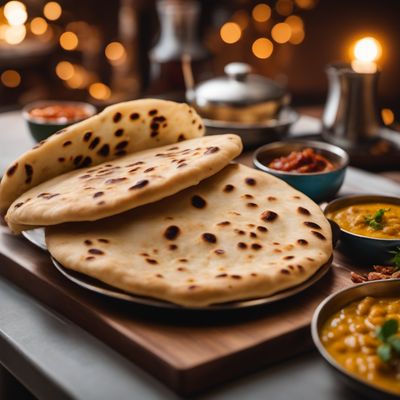
Chur chur naan
Chur chur naan is a popular Indian bread that is crispy and flaky on the outside and soft on the inside. It is typically served with spicy curries...
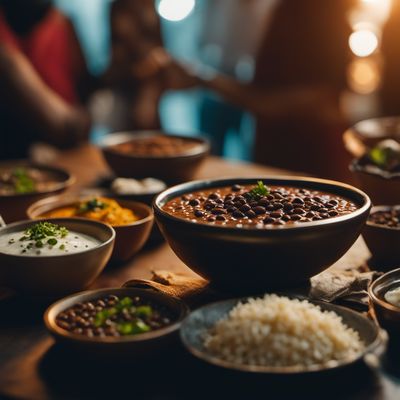
Dal makhani
Dal makhani is a popular Indian dish that is made with black lentils and kidney beans.
